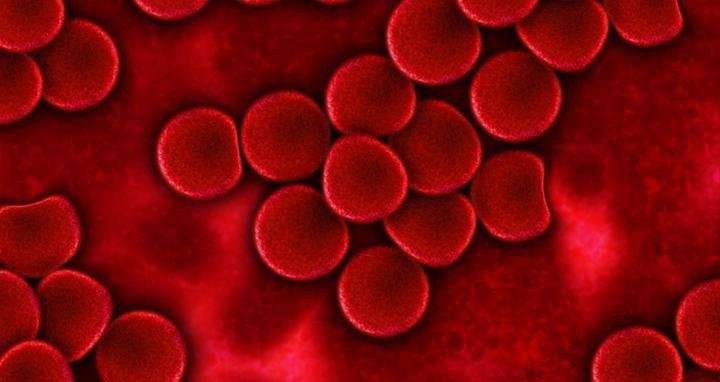How cells protect themselves against mechanical stress

The Piezo1 and Piezo2 ion channels are known to open up response to the slightest mechanical stimulus. MDC researchers have now discovered that the channels are also sensitive to changes in membrane voltage. The voltage sensitivity appears to be an ancient property of these channels that protects cells from mechanical stress.
A light breeze, a gentle stroke - the human skin can sense the slightest touch. A key player in this process is an ion channel in the skin's inner cell membranes that was only discovered seven years ago: Piezo2 responds to mechanical stimuli by opening when the cell membrane surrounding it expands. Opening the channel excites the sensory cell to send signals to the brain.
Piezo1 opens in the same way as PIEZO2, but is involved in the formation of blood vessels rather than the sense of touch. New vessels are only created when a blood flow is registered in the body, and Piezo1 is the sensor that registers the flow of blood. This channel is therefore vital for humans and other mammals. Mice that are missing Piezo1 after deletion of the gene die either before or shortly after birth.
Most Piezo channels are closed
Until now, the assumption was that Piezo1 and Piezo2 reacted solely to mechanical stimuli - perhaps because of the unique structure of the two ion channels, which is fundamentally different to that of classical voltage-gated channels. However, a research team led by Gary Lewin of the Max Delbrück Center for Molecular Medicine in the Helmholtz Association (MDC) in Berlin has now discovered that Piezo channels are in fact highly sensitive to changes in membrane voltage.
Cells probably use this ability to protect themselves from mechanical overstimulation, as reported in an article published in the journal Nature Communications initiated and carried out by Dr. Mirko Moroni, the lead author, and other members of Lewin's research group. The research was funded by the Alexander von Humboldt Foundation and the German Research Foundation (DFG).
Even flies and fish have the protective mechanism
"When the membrane voltage is normal, which in most cells is ?60 mV, around 95 percent of all the Piezo channels are closed and remain closed even when exposed to mechanical stimuli," explains Lewin. "More channels are activated only when the voltage changes and the membrane becomes depolarized." The researcher explains that this appears to be a very old evolutionary property, and one that plays an extremely important role.
Given that voltage-dependent Piezo channels have also been discovered in fruit flies and zebrafish, the scientists have concluded that this newly discovered protection mechanism has probably existed for many millions of years. In fact, the mechanism is even more pronounced in both these species than it is in evolutionarily younger species like mice and humans.
A mutation in Piezo1 damages red blood cells
This importance of voltage regulation is not only demonstrated by the fact that it has clearly existed for well over 100 million years, but Moroni also discovered a mutation in the Piezo1 channels of human blood cells that alters the voltage dependence of these ion channels, making them far more sensitive to changes in the membrane potential and thus more sensitive to mechanical stimuli.
"People with this genetic mutation suffer from a disease called hereditary xerocytosis," says Lewin. This is a congenital red blood cell abnormality that leads to anemia in affected patients. German speed skater Claudia Pechstein actually suffers from a mild form of this disease, which is why she was found to have too many immature red blood cells in her body in 2014 and was suspected of doping.
The mechanism was actually discovered by chance
"The fact that people get sick as a result of a change in the voltage dependence of Piezo channels demonstrates the importance of this mechanism - which remained unnoticed for so long and was first discovered almost by chance by Dr Mirko Moroni," says Lewin. The mechanism seems to protect blood cells from the mechanical stress they would otherwise be permanently exposed to as they travel through narrow blood vessels. As a next step, Lewin and his colleagues want to find out whether altering the voltage dependency of Piezo2 has any impact on the skin's sense of touch.
More information: Mirko Moroni et al, Voltage gating of mechanosensitive PIEZO channels, Nature Communications (2018). DOI: 10.1038/s41467-018-03502-7
Journal information: Nature Communications
Provided by Max Delbrück Center for Molecular Medicine

















